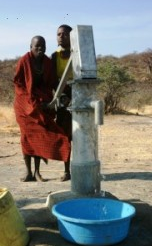The weather is getting nicer, and an outdoor activities many individuals are engaging in are yard work and gardening. I have always tried to fill my "flower boxes" with purposeful plants that require low maintenance and return each year, like the artichoke pictured above. I was looking at my delicious creation and noticed a large amount of ants feasting away.
In trying to find a way to keep the ants away, I began researching some home-made, non-toxic aides for growing my plants. As we know, the more toxins in our water supply, the more resources needed to clean it. So, here are a few DIY concoctions for keeping pests away and nourishing your produce without contributing to poisonous water drain-off:
For a natural insecticide:
For more recipes and suggestions, check out these two sites where I found this useful information:
Natural Pesticides
Natural Fertilizers
Happy Gardening!
In trying to find a way to keep the ants away, I began researching some home-made, non-toxic aides for growing my plants. As we know, the more toxins in our water supply, the more resources needed to clean it. So, here are a few DIY concoctions for keeping pests away and nourishing your produce without contributing to poisonous water drain-off:
For a natural insecticide:
mix 1 1/2 tablespoons of liquid soap
1 quart of water
A couple drops of orange or lemon essential oil
1 quart of water
A couple drops of orange or lemon essential oil
put in a spray bottle and spray infested area of plant. Reapply after rain.
For a natural fertilizer:
Many of the products you use daily can be used to feed the plants in your garden. A few examples:
Coffee grounds – Acid
loving plants such as tomatoes, blueberries, roses and azaleas love
coffee grounds mixed into the soil, sprinkled on top of the ground
before watering, or poured on top of the soil. If using as
a soil drench, soak 6 cups of coffee grounds in a 5 gallon bucket of
water. Let it sit for 2-3 days and then saturate the soil around your
plants.
Egg shells – Wash them first, then crush. Work the shell pieces into the soil near tomatoes and peppers. The
calcium helps fend off blossom end rot. Eggshells are 93% calcium
carbonate, the same ingredient as lime, a tried and true soil amendment!
Natural Pesticides
Natural Fertilizers
Happy Gardening!






